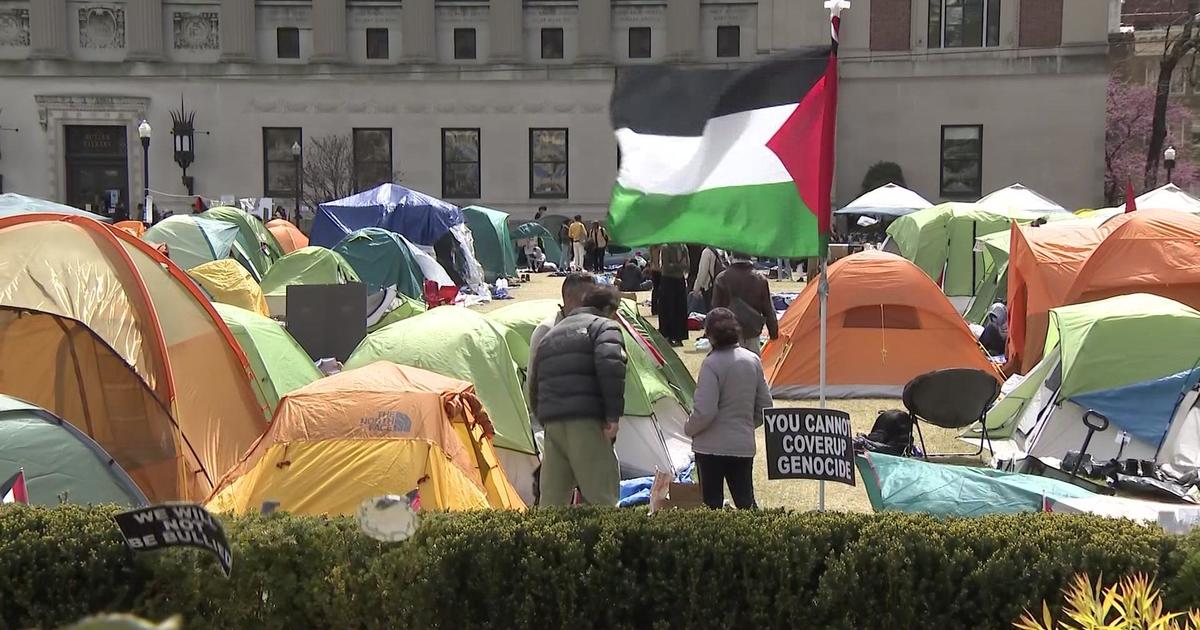Artists mourn loss of Manhattan Detention Center murals as buildings are demolished
NEW YORK -- As New York City moves forward with its plan to construct its controversial borough-based jails, questions remain not only about the feasibility of the plan, but also the impact on local communities.
In Downtown Manhattan, the deconstruction of the house of detention complex has been particularly contentious, not only about the re-building, but also the public art on and around the building – some of which has been lost forever.
Seven painted murals depict the New York immigrant story from the early 1900s to the late 20th century. Detailed friezes, which are like sculptural paintings, and complex metal sculptures told rich stories there.
This was all part of a public art project commissioned in the 1980s by the Department of Correction to adorn the walls and plaza of the Manhattan Detention Center complex.
"It's not for the jail. It's for the neighborhood, for the whole Chinatown," artist Kit-Yin Snyder said.
The buildings are being deconstructed for a larger jail, and in the process, the murals were destroyed. It was only after threatened lawsuits that the rest of the art was salvaged and placed in storage on Rikers Island.
"Oh God, I was so sad. I really felt so sad, like they are taking one of my memories away and putting it in jail," Snyder said.
Snyder, now 89, is the one of the artists originally commissioned for the project. She said it took about seven years to create her metal pieces.
"This my legacy, and now it's all gone, so what can I do? There's nothing," she said.
CBS New York met Snyder and artist Richard Haas, who created the complex's murals and friezes, at the Yeh Gallery at St. John's University, where models for the original installation are on display.
"I think I made some pretty good choices back then," said Haas, who is now 87.
"It's fascinating as a public artist, all of the work that goes into the making and the proposal process and the drawings and the models and the maquettes. All of that work rarely gets seen," gallery director Max Warsh said.
Haas' friezes were eventually saved, but the murals were painted directly on the building and could not be salvaged, except for one small piece.
"In the foreground, I had these two children. This one happened to be my son, who is, by then, about 9 or 10 years old. When we started this project, he hadn't been born yet ... They said, 'We're gonna chop this out and save it for you,'" Haas said.
The art was paid for through a program called "Percent for Art," allocating 1% of the building budget for public art commissions, and it was through the city's Visual Artists Rights Act that the some of the pieces were eventually saved.
"They're artists. They want to create, not litigate. We're here to protect their rights," said Robert Friedman, a partner at Sheppard Mullin.
Friedman is an attorney working with them on a pro bono basis.
"We are going to continue to pursue that to the extent that they want us to pursue it, for them and for the community," he said.
"It's an important example of public art and its significance within the community, and you can really see how the community came together to kind of stand up for the artists and advocate for their say," Warsh said.
"The Chinese community was absolutely apoplectic about the whole process, and they protested it in every way possible. Kit-Yin and I were part of one of those those protests," Haas said.
Both he and Snyder, as accomplished artists in the public sphere, are still concerned that even their surviving work may be lost forever.
"The more the public knows and appreciates that which has been given to them in the form of public art, great architecture, whatever, has to have the people accept it, cherish it and fight to preserve it, and that's the only way things really get saved in the end," Haas said.
This exhibition will be at the Yeh Gallery until Dec. 9. For more information, visit sjuartgallery.org.




